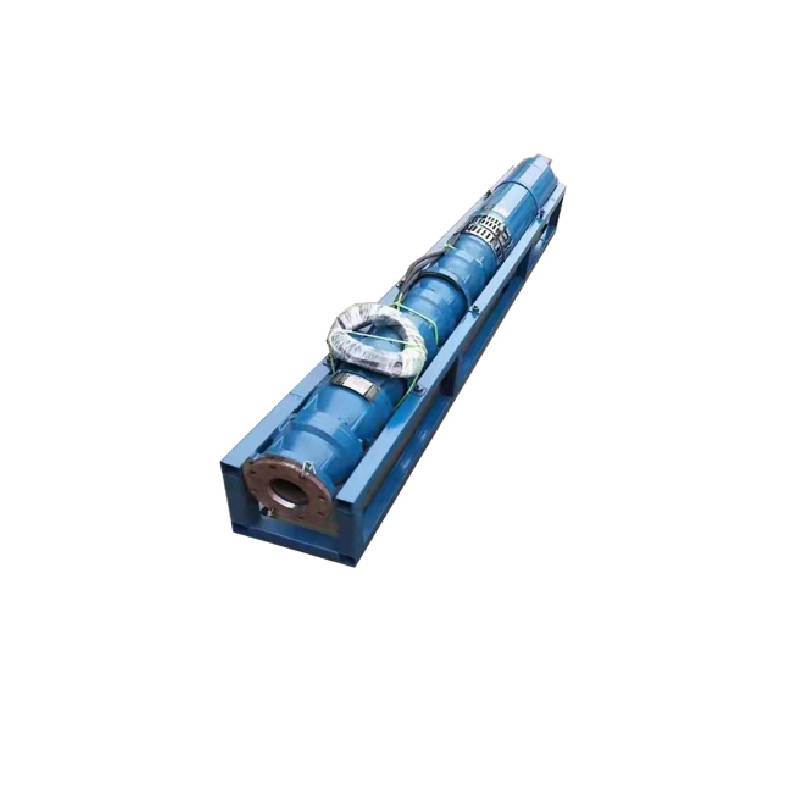Sep . 25, 2024 00:20 Back to list
how long do submersible well pumps last
How Long Do Submersible Well Pumps Last?
Submersible well pumps are vital components for groundwater extraction in various applications, including residential, agricultural, and industrial needs. Unlike traditional pumps that sit above ground, submersible well pumps are designed to operate underwater, which allows for more efficient operation and greater water delivery capabilities. However, one of the most common questions among users and potential buyers is How long do submersible well pumps last?
The lifespan of a submersible well pump can vary significantly based on several factors, including the quality of the pump, the environment in which it operates, and how well it is maintained. On average, a submersible well pump can last anywhere from 8 to 15 years. However, some high-quality pumps can operate effectively for up to 20 years or even longer with proper care.
Factors Affecting Lifespan
1. Quality of the Pump The initial investment in a submersible well pump often pays off in the long run. High-quality pumps made from durable materials are less prone to wear and tear. Better brands are engineered with advanced technology that enhances performance and extends lifespan. It is essential to choose a reputable manufacturer and check for warranties, which can indicate the expected longevity.
2. Water Quality The chemical composition of the water being pumped plays a crucial role in a pump's longevity. If the water contains a high level of minerals, sediments, or corrosive substances, it can significantly shorten the pump's lifespan. For instance, hard water with high mineral content can lead to scale buildup, while corrosive water can erode metal components.
3. Usage Patterns The frequency with which the pump is used also impacts its lifespan. Pumps that are operational continuously or that frequently cycle on and off may experience more wear and tear than those used less intensively. Understanding the demand for water in your specific situation will help you gauge how intensely the pump will operate.
4. Installation Proper installation is critical for the longevity of submersible well pumps. If a pump is incorrectly installed—such as being placed too deep, or having inadequate electrical connections—it could lead to premature failure. Therefore, hiring a qualified professional for installation is highly recommended.
how long do submersible well pumps last

5. Maintenance Regular maintenance is key to extending the life of a submersible well pump. This includes checking components, ensuring proper electrical connections, and monitoring the pump’s performance. At least once a year, the system should be inspected for potential issues such as blockages, leaks, or signs of wear. Keeping the well clean and well-maintained can also prolong the pump's effectiveness.
6. Environmental Factors The conditions surrounding the well, including temperature extremes, water table fluctuations, and the presence of contaminants, can affect pump longevity. For instance, a well that frequently runs dry can cause the pump to overheat and fail prematurely.
Signs of Wear
Users should be vigilant for signs of impending failure in a submersible well pump. Common indicators include
- Reduced water output If you notice a significant decline in water pressure or flow rate, it could be a warning sign of pump issues. - Unusual noises Grinding, whining, or clanking noises can indicate mechanical problems within the pump. - Increased energy consumption A sudden spike in your energy bill may suggest the pump is working harder than usual due to efficiency problems.
Conclusion
In conclusion, the longevity of submersible well pumps can range from 8 to 20 years, depending on various factors. The quality of the pump, water conditions, usage patterns, installation, maintenance, and environmental conditions are all crucial elements that will influence its operational lifespan. By selecting a good quality pump and maintaining it properly, users can ensure that their investment pays off by providing reliable service for many years. Regular monitoring and preventive measures are essential to catch any issues early and extend the life of this critical equipment.
-
Submersible Water Pump: The Efficient 'Power Pioneer' of the Underwater World
NewsJul.01,2025
-
Submersible Pond Pump: The Hidden Guardian of Water Landscape Ecology
NewsJul.01,2025
-
Stainless Well Pump: A Reliable and Durable Pumping Main Force
NewsJul.01,2025
-
Stainless Steel Submersible Pump: An Efficient and Versatile Tool for Underwater Operations
NewsJul.01,2025
-
Deep Well Submersible Pump: An Efficient 'Sucker' of Groundwater Sources
NewsJul.01,2025
-
Deep Water Well Pump: An Efficient 'Sucker' of Groundwater Sources
NewsJul.01,2025
-
 Submersible Water Pump: The Efficient 'Power Pioneer' of the Underwater WorldIn the field of hydraulic equipment, the Submersible Water Pump has become the core equipment for underwater operations and water resource transportation due to its unique design and excellent performance.Detail
Submersible Water Pump: The Efficient 'Power Pioneer' of the Underwater WorldIn the field of hydraulic equipment, the Submersible Water Pump has become the core equipment for underwater operations and water resource transportation due to its unique design and excellent performance.Detail -
 Submersible Pond Pump: The Hidden Guardian of Water Landscape EcologyIn courtyard landscapes, ecological ponds, and even small-scale water conservancy projects, there is a silent yet indispensable equipment - the Submersible Pond Pump.Detail
Submersible Pond Pump: The Hidden Guardian of Water Landscape EcologyIn courtyard landscapes, ecological ponds, and even small-scale water conservancy projects, there is a silent yet indispensable equipment - the Submersible Pond Pump.Detail -
 Stainless Well Pump: A Reliable and Durable Pumping Main ForceIn the field of water resource transportation, Stainless Well Pump has become the core equipment for various pumping scenarios with its excellent performance and reliable quality.Detail
Stainless Well Pump: A Reliable and Durable Pumping Main ForceIn the field of water resource transportation, Stainless Well Pump has become the core equipment for various pumping scenarios with its excellent performance and reliable quality.Detail
